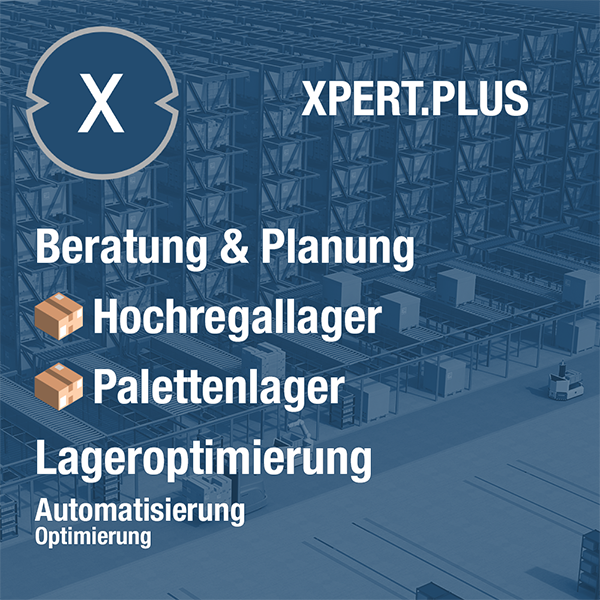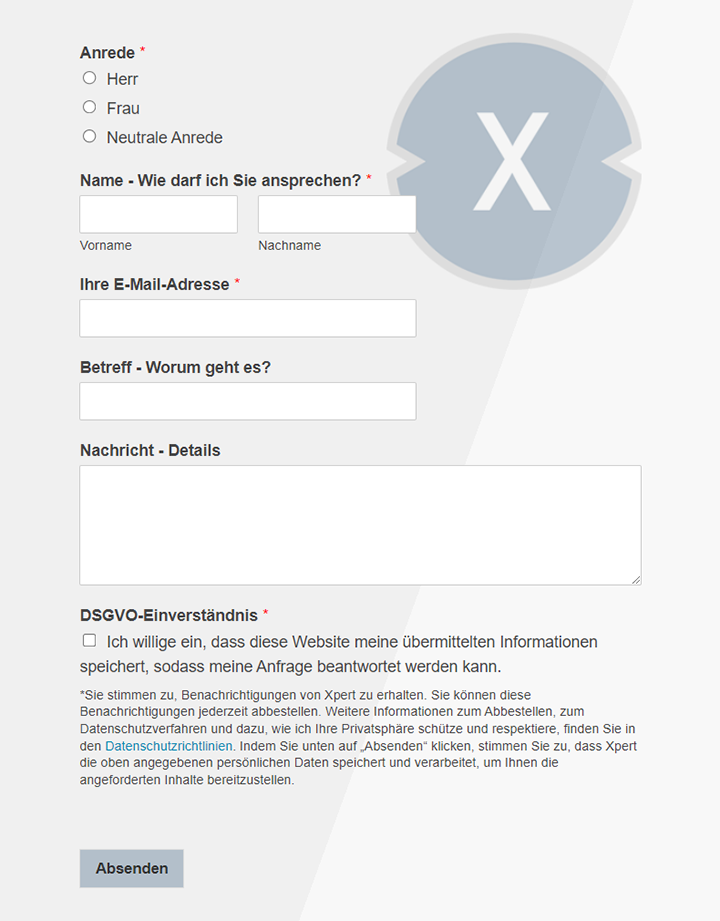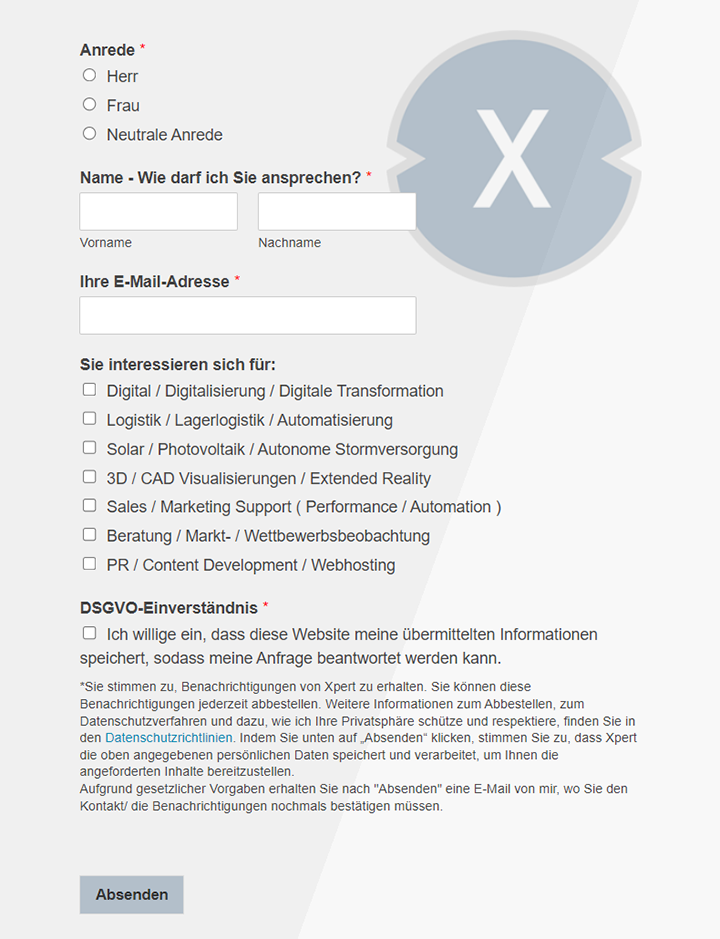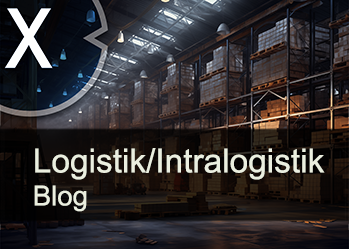How data-driven decision-making is revolutionizing logistics and marketing: More efficiency, better customer orientation and new opportunities
Xpert pre-release
Language selection 📢
Published on: January 11, 2025 / update from: January 11, 2025 - Author: Konrad Wolfenstein

Data-driven decision making – data as a driver: What logistics and marketing can learn from measurable processes – Image: Xpert.Digital
From gut feeling to success: How smart metrics make companies future-proof
Big data in focus: Why data-driven strategies determine success or failure today
Data is often considered “the new oil” and has long since become a crucial factor for companies that want to assert themselves in the age of digitalization. In a world in which customer needs are becoming increasingly dynamic and competitive pressure is constantly growing, data opens up countless opportunities to optimize and sustainably transform processes in logistics and marketing. Anyone who relies on pure experience or the infamous “gut feeling” runs the risk of leaving valuable opportunities unused or making wrong decisions. The focus is on the consistent use of measurable processes and precise key figures to set a strategic course, minimize risks and secure competitive advantages.
“Data is the fuel of the modern economy” – this sentence makes it clear how relevant information has become in almost all business areas. The networking of different data sources, the possibilities of big data analytics and the increasing performance of artificial intelligence have established a data-driven culture in many companies. This development offers special opportunities for marketing and logistics, as both areas are increasingly working closely together to better understand customer needs, accelerate delivery routes and ultimately increase customer satisfaction.
In logistics, data-based technologies and analysis methods are used to identify bottlenecks at an early stage, optimize routes and manage inventory levels efficiently. In this way, costs can be reduced and delivery times shortened. In marketing, comprehensive data analysis enables the segmentation of target groups, the precise understanding of customer expectations and the personalization of campaigns. Powerful key figures and advanced analysis methods play a central role, enabling well-founded decision-making. By intelligently linking their insights, logistics and marketing can not only improve their respective processes, but also inspire each other and merge into a unit that takes a holistic view of the customer experience and continuously optimizes it.
This article highlights how data-driven decision-making can become a success factor in logistics and marketing. It explains which key figures and types of data are particularly relevant and how advanced analysis methods such as predictive or prescriptive analytics derive concrete recommendations for action. It also shows the role that technologies such as the Internet of Things, artificial intelligence and automation play in making data-supported processes even more efficient. All of this underlines that a data-centric approach is not just a modern buzzword, but an indispensable lever for growth, innovation and long-term competitiveness.
Suitable for:
Data-driven decision making as a key factor
Many companies today are consciously working towards a paradigm shift: away from subjective assumptions and towards objectively measurable facts. “Analysis at the push of a button instead of gut feeling” aptly summarizes this approach. Data-based models offer a structured and repeatable approach that helps minimize wrong decisions. Where managers and specialists once endlessly discussed the right strategy, tools and analysis platforms now provide clear indicators for recommended actions.
Particularly in logistics, where the transport of goods, the planning of supply chains and the optimal use of storage and transport capacities are involved, a data-based approach can bring about significant increases in efficiency. Larger amounts of data are collected in real time to track the status of deliveries, transportation and warehouses. Predictive analyzes can be used to predict future developments and possible bottlenecks, so that, for example, a subsequent delivery can be organized at an early stage. A classic example is dynamic route planning: Using GPS data and live information about traffic flows, the fastest or most cost-effective route can be calculated in a matter of seconds and continuously adjusted.
In marketing, data-driven decision making is no less revolutionary. Instead of placing broad, scattered advertising that may reach many people but only convert a few, evaluating customer data opens up the possibility of precisely defining target groups. In this way, the approach can be personalized, for example by ensuring that newsletter recipients only receive information about products or services that really match their interest profile. By evaluating click and purchase behavior, demographic data or feedback from social media channels, a detailed picture of customer wishes and needs is created. If you know when a customer is most likely to be receptive to an offer and which channel they prefer to use to obtain information, you can use advertising budgets much more efficiently.
The interconnection of these two areas - logistics and marketing - shows how data can become the central driver: As soon as marketing predicts an increase in demand for a product, logistics can work closely together to prepare the warehouse, secure transport capacities and optimize delivery times. In this way, not only customer satisfaction increases, but also profitability. The foundation of this cooperation is a common database in which relevant information is available in real time and is continuously evaluated.
Suitable for:
Process optimization through key figures
A key advantage of data-based decisions is the ability to use key performance indicators (KPIs) to make processes transparent and continuously improve them. While metrics such as delivery accuracy, on-time shipping rate and inventory turnover dominate in logistics, marketing focuses more on metrics such as conversion rate, click-through rate, cost per click or return on ad spend. Regardless of the area of application, the basic idea is always the same: “If you can’t measure it, you can’t improve it.”
In logistics, KPIs help to assess the efficiency of supply chains and to specifically identify adjustment screws. For example, if delays occur repeatedly on certain routes, data will reveal whether these are due to traffic jams, a lack of transport capacity or inadequate communication with suppliers. If transport and inventory data is continuously analyzed, trends can also be identified, which can be incorporated into proactive planning. For example, in the event of regular delivery bottlenecks in the winter, an intelligent system could automatically suggest an alternative delivery network to avoid snow chaos in certain regions.
In marketing, key figures play a central role in budget planning and success monitoring. By monitoring KPIs such as customer acquisition cost or customer lifetime value, marketers not only understand which channels are the most profitable, but also how much should be invested to achieve long-term profitable growth. In this way, the often very complex keyboard of online and offline channels can be optimally coordinated with one another. If you have determined that a particular social media platform has the highest engagement rate, you can specifically invest in content that promotes both reach and conversion.
Of central importance here is the ability to interpret key figures in the correct context. A short-term increase in on-time shipping rates in logistics may seem positive, but at the same time it could result in higher costs if additional transport capacity was purchased at high cost. Likewise, a high click rate in marketing can be deceptive if the conversion rate subsequently remains low. Data-based decision making means never looking at key figures in isolation, but always embedding them in the overall picture and, if necessary, relating them to other KPIs.
Integration of technologies
Data-driven processes require a technological infrastructure that makes it easier to collect, process and use large amounts of data. In the age of cloud computing, Internet of Things (IoT) and artificial intelligence (AI), companies have numerous options to network their systems with one another and establish automated workflows.
In logistics, IoT sensors ensure seamless tracking of packages and containers by sending real-time information about position, temperature or vibrations. This makes it easier to transport sensitive goods such as food or medicine under optimal conditions. If deviations from specified parameters occur, the system sounds an alarm and initiates countermeasures before a failure or loss of quality occurs. “Transparency in the supply chain is the key to customer loyalty,” an experienced logistics manager once said, and it is precisely this transparency that the IoT creates.
Similar technologies are used in marketing to track customer journeys and personalize customer experiences in real time. For example, chatbots on websites or in messenger services can react immediately if a user asks questions about a product or has difficulties with the ordering process. The chatbots continually learn from the interactions and can give answers more and more precisely and efficiently. Machine learning algorithms sift through the huge amount of customer data to recognize preferences and purchasing patterns, which result in tailor-made offers.
Another aspect of technology integration is the merging of marketing and logistics systems. Real-time communication between systems plays a crucial role here. For example, if marketing creates a special offer for a particular product, logistics must be informed immediately about the expected increase in demand in order to replenish inventory in a timely manner and secure transport capacity. If this data is not shared in a timely manner or is only available decentrally in isolated systems, coordination problems arise. The result: delivery bottlenecks, delays and dissatisfied customers.
By standardizing the IT landscape and relying on open interfaces or modern platforms, companies can create a comprehensive ecosystem in which all relevant data comes together and is available to everyone involved in real time. This networking forms the foundation for agile data management, which delivers comprehensive reports when required, allows trend analyzes and generates proactive recommendations for action.
Suitable for:
Customer focus and personalization
One of the greatest strengths of data-driven processes is their ability to improve customer experiences and thereby increase customer loyalty. In logistics, this means that delivery times and options are increasingly tailored to individual needs. For example, a customer who is very busy at work will prioritize having their package delivered in the evenings or on weekends. Another customer who values sustainability is happy about climate-neutral delivery options. All of this is only possible if customer data is continuously evaluated and integrated into comprehensive planning processes.
Personalization is also the order of the day in marketing. “The right message, at the right time, via the right channel” – this or something similar is the credo of marketers who rely on data-based approaches. Collecting and analyzing customer data from different touchpoints, such as the online shop, social media channels or stationary retail, makes it possible to make personalized product recommendations or develop discount campaigns that really match the customer's individual preferences. Studies show that personalization significantly increases the likelihood of a purchase while promoting customer loyalty.
The close integration of logistics and marketing further strengthens customer orientation because data from both areas can be used to paint a comprehensive picture of the customer. For example, if the company knows that a customer has frequently ordered products from a specific range in the last few months, it can offer them fast delivery or special discounts for suitable items. Ideally, the delivery process even adapts to your personal life situation - for example, by a logistics system recognizing that the customer can only accept packages early in the morning during the week and prioritizing these time slots accordingly.
In addition, data-based customer dialogue makes it possible to actively obtain feedback and respond quickly to criticism. If customers are dissatisfied with the delivery time or experience shipping issues, they can provide real-time feedback that is automatically fed into the systems. This makes it clear where the process still has problems and where improvements are needed. “Customer feedback is a gift,” it is often said, and data-based feedback systems help to appropriately appreciate and use this gift.
Suitable for:
Xpert partner in warehouse planning and construction
The Secret of Strong Supply Chains: Why Data Diversity is the Key to Success
Data types for supply chain optimization
In order to successfully manage supply chains, a variety of data types must be collected and analyzed. This diversity of data creates a holistic view of all processes, allowing bottlenecks, inefficiencies and potential to be quickly identified.
Inventory data
These include inventory quantities, inventory turnover frequency or the inventory-to-sales ratio. A precise overview of inventories is essential to find the optimal balance between excess stocks and shortages. Too much inventory ties up capital and causes additional costs, while too little inventory can result in delivery delays and lost sales.
Supplier data
Information about supplier performance – such as punctuality, quality or delivery reliability – is crucial for identifying reliable partners and reducing procurement risk. “A supply chain is only as strong as its weakest link,” it is often said, and this is where supplier data can help to identify weaknesses in advance and initiate countermeasures.
Transport data
Delivery times, punctual shipping rates, transport costs or route optimization are key figures that reflect efficiency in the transport sector. Real-time monitoring and GPS tracking open up opportunities to track deliveries and intervene immediately in the process if necessary. Anyone who knows which transport routes are most profitable and where traffic jams or delays often occur can flexibly develop counter-strategies.
Demand data
Sales figures, seasonal fluctuations or customer preferences are the key to precise demand planning. Through careful evaluation, production quantities and inventory levels can be adjusted in advance. Marketing campaigns, such as discount offers or product highlights, have a direct impact on demand - which is why close coordination between marketing and logistics is so important.
Process data
This includes throughput times, production capacities, utilization levels or quality indicators. If you know exactly how quickly products can be manufactured or picked, you can better avoid bottlenecks. For example, if a production area is already working at its limit, this can delay the entire delivery process when marketing announces a new large order.
Customer data
In addition to pure order or service data, factors such as customer satisfaction or complaint frequency are also relevant. Anyone who supplements their reporting with key figures such as perfect order rate and fill rate will quickly see how well the company actually fulfills customer requirements. The better you understand when and why failures or complaints occur, the more targeted measures you can take to improve service quality.
The integration of all this data provides an overall picture that makes it possible to comprehensively optimize supply chains and adapt them to market needs. Where individual areas previously operated separately, a new permeability of information is emerging, which lays the foundation for digital transformation and sustainable success.
Methods of data analysis in the supply chain
In order to turn a large amount of data into valuable insights, special analysis methods and tools are required that make complex connections visible. Companies use various strategies to evaluate both historical and real-time data and derive recommendations for action from them.
Predictive Analytics
Historical data is used to make predictions about future events using statistical models and algorithms. In the supply chain, this means, for example, anticipating seasonal fluctuations or identifying delivery bottlenecks early on. This allows logistics to plan better in coordination with marketing and ensure that the necessary resources are available on time.
Real-time analytics
With real-time analysis, data is evaluated immediately as it arises. This enables continuous monitoring of the delivery status or machine utilization. If the data shows initial indications of problems, countermeasures can be taken immediately. In practice, this can mean, for example, that a different transport route is chosen in the event of a traffic jam or that a delivery is redirected because the customer moves to a different address.
Prescriptive Analytics
This is about the next step after the prediction: deriving concrete suggestions for action and optimizing processes. Instead of just predicting that there could be a delivery bottleneck in a week, the system suggests solutions, for example rerouting via another distribution node or purchasing external storage capacity. In this way, decisions are automated and processes are streamlined.
Big Data Analytics
When data from different sources - such as social media, sensors, ERP systems and customer feedback - are brought together, an enormous amount of data is created. Big data analytics offers the tools necessary to identify patterns and connections that remain hidden in conventional analyses. For example, correlations between external factors such as weather data and delivery times can be determined, which in turn helps to make the supply chain even more robust.
Machine learning and AI
Using self-learning algorithms, companies can automatically detect anomalies, improve forecasts and even partially replace human decision-making processes. One example is dynamic route planning, in which algorithms continually adapt to new conditions. “AI never sleeps,” some say, and especially in logistics it becomes a permanent assistant that is constantly looking for optimization potential.
Process Mining
Event logs are analyzed to make processes transparent and to identify bottlenecks or deviations. A digital image (“digital twin”) of the supply chain makes it possible to run through various scenarios and see how changes affect the overall structure. This way you can understand exactly why a certain process step keeps causing delays and how these can be remedied.
By combining these analysis methods, companies can not only increase the operational efficiency of their supply chains, but also become strategically future-proof. Data becomes the heart of every planning, serves as an early warning system and forms a basis for innovations.
Synergies between logistics and marketing
At first glance, logistics and marketing differ greatly in their technical focus. But if you look deeper, you quickly realize that both areas benefit from closer integration. “From numbers to strategy” applies to both because ultimately it is about more accurate forecasts, greater effectiveness and better customer centricity.
Faster response to changes in demand
Thanks to data-based market research, if marketing knows that a certain product will soon be trendy, logistics can adjust capacities at an early stage and avoid bottlenecks. This promotes a smooth process from purchasing from suppliers to delivery to the final storage facility or directly to the customer.
Cost efficiency
Shared data not only reduces the risk of bad investments, but also enables more precise planning of campaigns and transports. If marketing provides current sales forecasts, logistics can plan its inventories and routes without having stocks that are too high or too low on suspicion. This saves costs on both sides.
Holistic customer experience
Today, customers not only expect a good product, but also a punctual, convenient and transparent delivery. To ensure this, marketing must know what customers' expectations are and logistics must ensure that these expectations are met. For example, a personalized tracking page can be offered after the purchase is completed, keeping the customer updated every step of the way.
Data-driven personalization
Since marketing stores all information about customer behavior, logistics can also better individualize its processes. In this way, an existing customer who purchases more frequently can be prioritized for delivery or automatically given preferential treatment. In return, marketing receives valuable feedback from logistics, for example about delivery times or return rates, which are considered an indicator of customer satisfaction.
Adapt faster to market dynamics
Markets change rapidly, trends come and go. In order to be able to react quickly, you need a smooth flow of information. When marketing detects a change in consumer behavior (e.g. increased online demand in a specific region), logistics can act immediately and increase local capacity. This continuous data comparison enables an agile approach that can become a market advantage.
These synergies clearly show how much marketing and logistics can learn from each other. While marketing can, among other things, use the precise measurability of logistics processes as a model, logistics benefits from the customer focus and target group orientation of marketing. Data is always the connecting element, because both areas can only cooperate successfully if they are recorded, evaluated and converted into insights in a uniform manner.
### Sustainable success through data-driven processes
Data is no longer just a tool to support vague assumptions, but rather forms the foundation of modern corporate management. In both logistics and marketing, data-supported strategies can be used to make processes transparent, reduce costs and significantly improve customer experiences. The central requirement is a consistent data culture in which collecting, sharing and analyzing information has a high priority.
To realize the full potential, companies should consider the following aspects:
1. Holistic data management
Data must be available across disciplines. Silo thinking means that information does not reach the right people in a timely manner and potential is wasted.
2. Continuous optimization
Key figures are not an end in themselves, but rather serve for constant improvement. Viewing KPIs in real time enables proactive action and promotes a culture of learning and adaptability.
3. Technological basis
Whether cloud solutions, IoT sensors or AI algorithms – a solid, scalable and secure infrastructure is needed to collect and process data efficiently.
4. Employee training
The best technology is of little use if staff are unable to competently interpret data and translate it into operational decisions. Training and further education are therefore a central success factor.
5. Integration of sustainability
Especially when it comes to the interaction between marketing and logistics, data can be used to find new ways to achieve a sustainable corporate strategy. While marketing reflects customers' increasing awareness of ecological and social issues, logistics can reduce emissions through optimized route planning or the use of alternative means of transport.
Data-based processes are “unbeatable” because they are based on measurability, transparency and a continuous learning curve. If companies succeed in comprehensively digitalizing their supply chains and closely linking their marketing strategy with logistics processes, a cycle of feedback and improvement is created that has a positive impact on the entire value chain. What's more, the data-driven collaboration between both disciplines takes the customer experience to a new level, as the entire process from the promotion of a product to the final delivery to the end user works smoothly.
Companies that invest early in building a data-driven organization and take full advantage of the opportunities offered by big data, AI and real-time analytics are best prepared for the challenges of digital transformation. Data makes it possible to react flexibly to market dynamics, open up new business areas and at the same time ensure the highest level of efficiency. This does not completely invalidate the gut feeling, but it increasingly serves as a supplement to objective facts. Because the future belongs to those who bring the two together: human experience and intuition, supported by reliable, quantitative data.

Xpert.Plus warehouse optimization - high-bay warehouses such as pallet warehouses consulting and planning
We are there for you - advice - planning - implementation - project management
☑️ SME support in strategy, consulting, planning and implementation
☑️ Creation or realignment of the digital strategy and digitalization
☑️ Expansion and optimization of international sales processes
☑️ Global & Digital B2B trading platforms
☑️ Pioneer Business Development
I would be happy to serve as your personal advisor.
You can contact me by filling out the contact form below or simply call me on +49 89 89 674 804 (Munich) .
I'm looking forward to our joint project.
Xpert.Digital - Konrad Wolfenstein
Xpert.Digital is a hub for industry with a focus on digitalization, mechanical engineering, logistics/intralogistics and photovoltaics.
With our 360° business development solution, we support well-known companies from new business to after sales.
Market intelligence, smarketing, marketing automation, content development, PR, mail campaigns, personalized social media and lead nurturing are part of our digital tools.
You can find out more at: www.xpert.digital - www.xpert.solar - www.xpert.plus


























